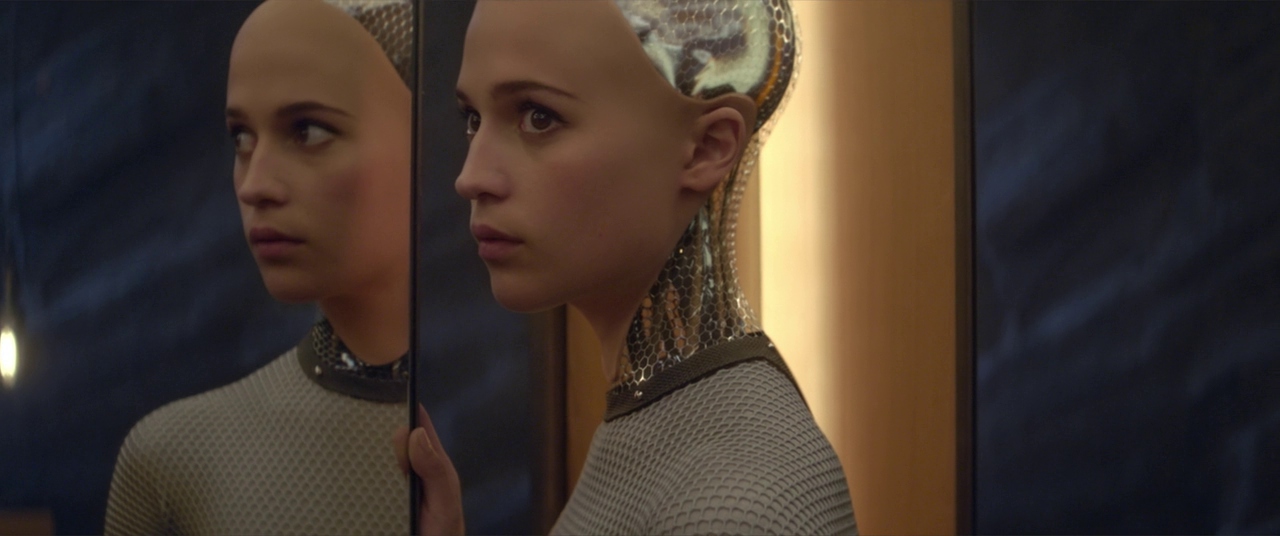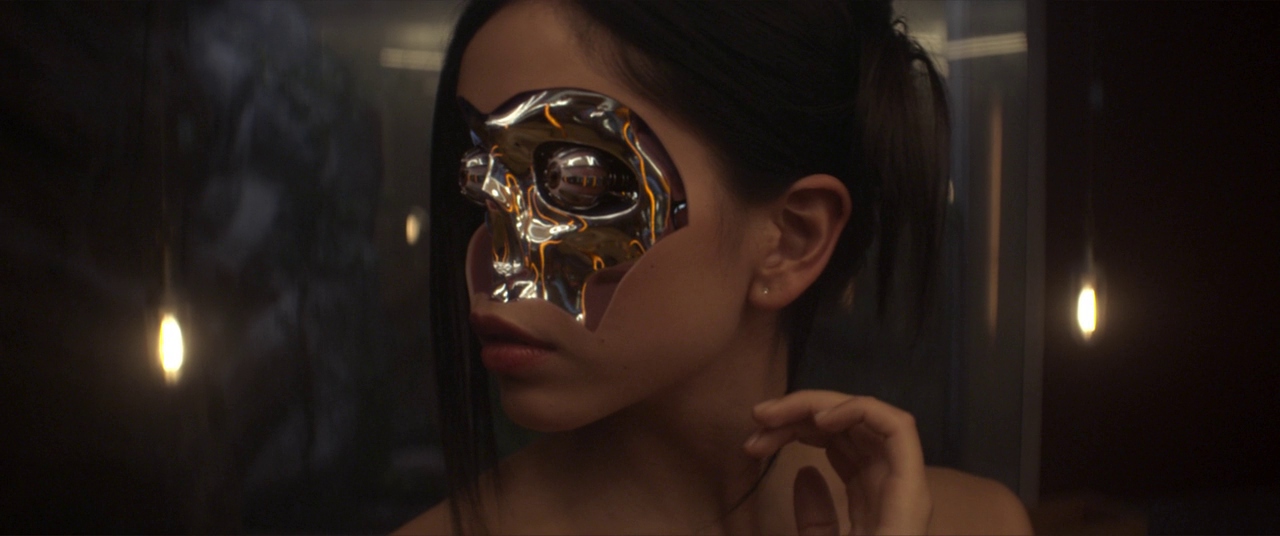By Katerina Valouxi,
American cinema has always aimed to create another version of the real world to showcase a fascinating but not unreachable future. Thus, American filmmakers have been creating cyborg narratives since the early 1980s, from “Terminator” to “Star Trek” and “Blade Runner”, narratives in which women and female cyborgs tend to be significantly objectified and devoid of any intellectual skills. Nowadays, cyborg stories are crafted with a particular focus to artificial intelligence, shedding light on the intellectual and emotional side of female robots and cyborgs in general. However, to what extent are gender norms actually subverted in modern American cinema when it comes to feminized artificial intelligence?
One of the most popular representations of female robots in modern American cinema is Alex Garland’s “Ex Machina” (2014). The film follows Caleb, a young programmer who wins a coding competition. The prize of this competition includes spending a week with Nathan, the CEO of his company, in his isolated house in the mountains. When Caleb arrives, it is revealed to him that he will take part in an experiment that will determine if Nathan’s cyborg creation, Ava, actually possesses human consciousness. The film puts “humanness” on the center and raises the question of whether a cyborg, a female cyborg, can be treated as an intellectually equal being.
Caleb’s part in the experiment is to watch Ava, who is always behind a glass, and decide whether or not she has acquired human intelligence by asking her questions. This is an act called “scopophilia” according to a theory of Freud’s, who claims that scopophilia is the act of watching through a “controlling and curious” gaze, the desire to see the forbidden. Ava represents the “forbidden” that is constantly being watched, both by Caleb and Nathan, she is observed as an erotic object who is displayed for the audience to see. Her artificial body that accentuates her feminine, curving lines is manufactured by Nathan, a man who wishes to fulfill his own male fantasies through creating female cyborgs. Slowly, Ava acquires self-awareness, realizes the power she has over the men and she seduces them in order to escape from the “prison” she has been put in. Hence, she is portrayed as a femme fatale, tricking the male characters in order to liberate herself. However, when she has the chance to reconstruct her own body before she escapes, she steals body parts from the other cyborgs and only creates for herself a replica of the supposedly perfect woman, without actually transgressing any restricting boundaries in order to create something new.

Another well known representation of feminized artificial intelligence is Spike Jonze’s “Her” (2013). The film is set in a near future in which artificial intelligence devices and media are used as assisting tools in everyday life. The story follows Theodore, a lonely person whose job is to write other people’s letters for them, until he develops a close relationship with an operating system (OS), which is supposed to assist him and meet his every need. The film is centered around loneliness and explores the desperate need for human connection.
When he firstly installs the Operating System, Theodore is the one who assigns the female sex to it and thus the dynamics are already set; He is a lonely, depressed man who needs a woman to assist him emotionally. However, she is the one that takes the initiative and names herself “Samantha”. Samantha now acts not only as his personal assistant but also as his companion. She does not have a body, but she has a striking voice, the voice of the actress Scarlet Johansson, and so whenever Samantha speaks the audience can immediately picture Johansson, a woman that is known to be a standard model of femininity. Theodore and Samantha form a romantic relationship, they grow together intellectually and emotionally despite Samantha being an OS and having no physical dimension. However, the ultimate goal of the OS is only to be an assistant to their human companion, and when Samantha starts gaining independence, Theodore starts exhibiting signs of jealousy. When he realizes that Samantha has been assisting hundreds of other people as an OS and having similar romantic relationships with them, his expectations are not met anymore. The image of the perfect woman that he has created around Samantha is now lost and his male fantasy has now crumbled.

Technology in American Cinema has been used to showcase liberation, progress, and revolution. Yet, it is not always used as a liberatory tool for the rejection of traditional gender identities, and, thus, gender stereotypes may seem to be subverted, but they are usually perpetuated. If there is a chance to construct something new, something free of any stereotype, by employing technology and artificial intelligence, then why do we stick to reproducing what already exists? Is artificial intelligence going to liberate us from gender stereotypes and societal expectations, or is it going to reinforce the restricting boundaries that we already struggle to escape from?
References
- Mavridou, Ioanna. “Gender,(Dis) Embodiment, and the Image of AI and Robot in Spike Jonze’s Her and Alex Garland’s Ex Machina.” Unpublished Dissertation]. Aristotle University of Thessaloniki.
- Mulvey, Laura, Visual Pleasure and Narrative Cinema, Screen, Volume 16, Issue 3, 1975, 6-18.
- Musap, Emilia. “Why is “It” Gendered–Constructing Gender in Alex Garland’s Ex-Machina (2015).” Anafora: Časopis za znanost o književnosti 2 (2018): 403-412.
- Constable, Catherine. “Surfaces of science fiction: enacting gender and “humanness” in ex Machina.” Film-Philosophy 22.2 (2018): 281-301.




